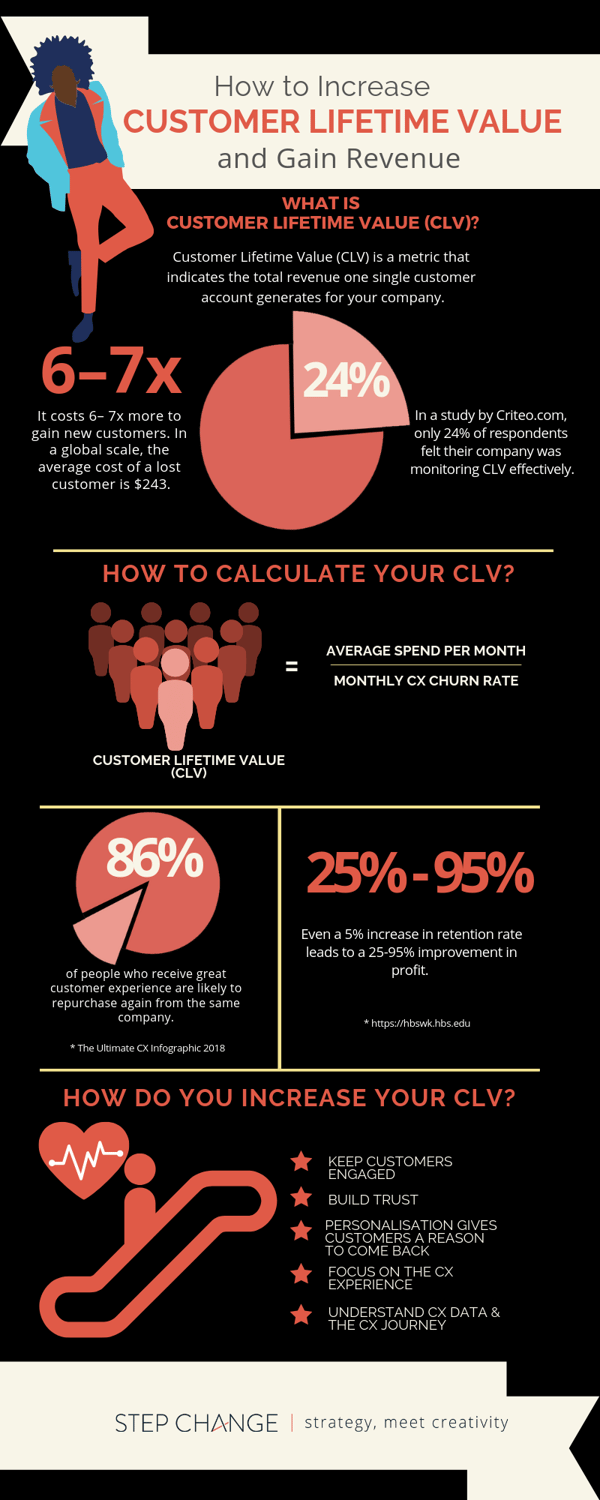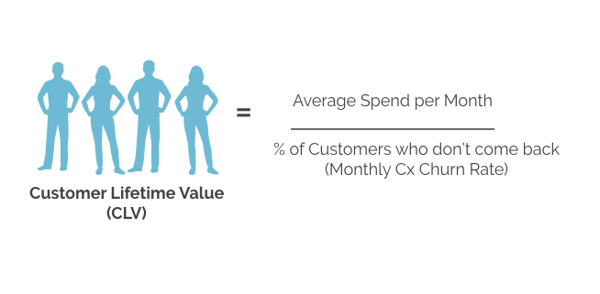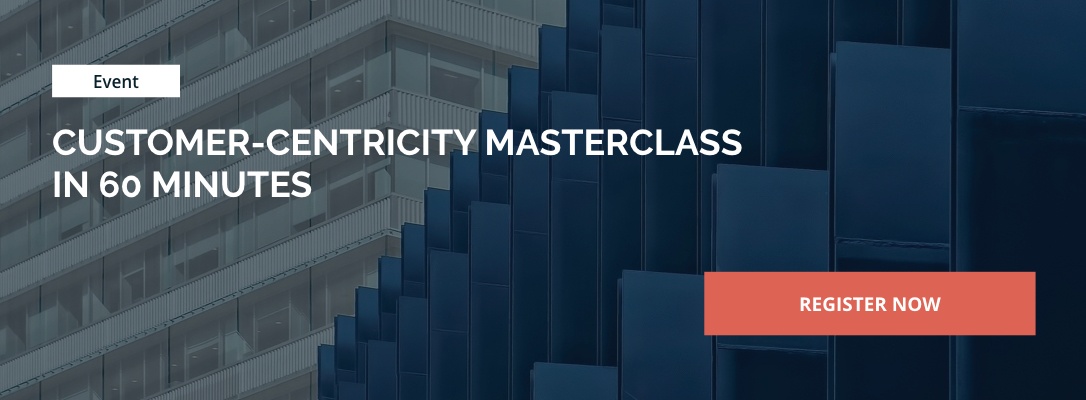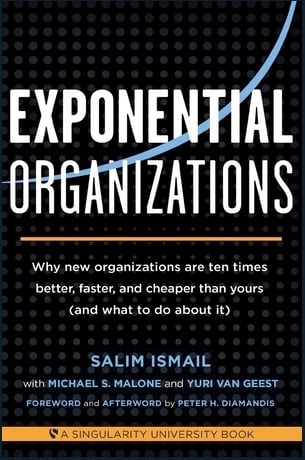Customer lifetime value is a critical factor in business success, but not all companies are tracking it. Many companies do not measure it, do not know what it is, or choose to completely ignore it.
Insight: It is less expensive for businesses to retain customers than to acquire new ones. Understanding Customer Lifetime Value (CLV) helps businesses retain high-value customers.
Data: It costs 7x more to gain new customers. In a global scale, the average cost of a lost customer is $243, according to Kissmetrics.
Key Action Point: To improve their revenue, businesses need to understand how to retain their customers and increase their CLV.

What Is Customer Lifetime Value, and How Do You Calculate It?
According to HubSpot, Customer Lifetime Value, or CLV, is a metric that indicates the total revenue a business gains from one single customer account.
The CLV considers the customer’s revenue value and compares it to their predicted customer life span. By knowing the CLV, businesses can better segment customers according to how valuable they are to the overall business.

How to Increase Your Customer Lifetime Value
Have a look at your current CLV. It tells you how well you’re resonating with your audience, how much they like what you’re selling, what you’re doing right, and what needs more improvement.
Now that you have an idea of what your CLV is, how do you improve it? Here are five proven ways.
Keep Customers Engaged
One way to build your CLV and increase sales is by engaging and communicating with your customers. Establishing an ongoing relationship with your customers not only leads to brand loyalty, but it also builds trust.
Email marketing is a great way to increase your CLV. By keeping customers engaged through email offers, newsletters, and always giving them something of value, you consistently create an opportunity to get your customers to re-engage.
Recommended article: Email Analytics: 5 Email Marketing Metrics You Need to Measure Your Success
Build Trust with Your Customers
One of the foundations of a powerful brand is trust. And the best way to build trust with your customers is by meeting their expectations and delivering on your brand promise.
This means holding your end of the bargain if you promise to give them 100% customer satisfaction and their money back if issues happen. This also means responding to help and support requests in a timely manner.
Personalisation Gives Customers a Reason to Come Back
Driving customer loyalty these days goes far beyond loyalty rewards and programs. To inspire loyalty from your high-value customers today is through personalisation and making them feel valued.
Focus on the Customer Experience
Making sure your customers are always happy and satisfied is one way to improve your CLV. A study from the Temkin Group shows that 86% of people who had great customer experience were more likely to buy from the same company again.
Businesses need to find ways to improve their customer service efforts and actively find ways to resolve customer issues and concerns. Many businesses track service level agreements (SLAs) and give their high-value customers a dedicated line for support so they know they can always talk to someone for questions and concerns.
Creating a culture that is customer-focused from your top-line to bottom-line employees is also crucial to ensure treating your customers right and with care becomes a mindset that need not be asked for.
Understand Customer Data and the Customer Journey
Many businesses today are not taking full advantage of customer data analytics to inform their business strategy, and it needs to change.
In a study conducted by Broadway Business, only 32% are satisfied with their company’s use of analytics to create a competitive advantage. Thus, there’s lots of opportunity and room for improvement.
For businesses who are set on creating a more customer-centric culture, it is important to invest in the right people and tools that help you track, analyse, and understand customer data and the customer journey so you’ll know what you need to do to optimise your operations for better customer satisfaction.
Tracking your CLV also helps you check for churn; this allows you to take early measures to recover lost customers and identify what needs to be done to prevent it from happening in the future.
Final Thoughts
Customer Lifetime Value is a critical metric that businesses should not ignore. Many companies have already proven how tracking it helps their business retain high-value customers and have acknowledged its importance in driving business success.
If you want to win with your customers, tracking and understanding your CLV and using it to inform your strategy helps you move in the right direction so you can achieve your business goals.
















